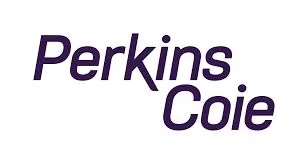- within Corporate/Commercial Law topic(s)
- in United States
- within Transport topic(s)
Key Takeaways
Corporate and securities professionals convened in Chicago on October 9 and 10, 2025, for the Annual Ray Garrett Jr. Corporate & Securities Law Institute (the Institute). Notably absent were officials from the U.S. Securities and Exchange Commission (SEC), who were unable to participate due to the ongoing government shutdown. Panelists examined recent regulatory developments and their implications, addressing several timely and critical issues. The discussion highlighted the following:
- Management and boards should prepare for a more principles-oriented, process-focused regulatory posture, even as enforcement attention centers on core investor protection themes.
- Disclosure controls should reflect the realities of AI deployment.
- Compensation committees should anticipate investor and staff scrutiny of complex pay disclosures.
- Issuers exploring arbitration should proceed deliberately, with state-law, shareholder, and administrative considerations top of mind.
Regulatory Agenda
A Tilt Toward Principles and Flexibility
Panelists noted a shift toward a more principles-based regulatory framework, discussing increased flexibility in disclosure reviews and a reassessment of prescriptive requirements. Ongoing staff resource challenges, including significant personnel attrition, are influencing both the pace of policy development and the approach to filing reviews. Additionally, an August 2025 SEC Inspector General report on the agency's public company filing review process underscored the need for more explicit, risk-based criteria in selecting and evaluating filings. The report's findings suggest that incremental, rather than sweeping, improvements to the review process are warranted.
Two recently disclosed policy pivots drew particular attention. First, the SEC's evolving stance on mandatory arbitration provisions spurred interest and caution given unsettled state law constraints, shareholder dynamics, and the risk of inconsistent legal frameworks. Companies weighing arbitration provisions were urged to evaluate state-law limitations, shareholder engagement outcomes, proxy advisory implications, and litigation profiles carefully before proceeding.
Second, a potential move from quarterly to semiannual reporting drew mixed reactions. While some see an opportunity to reduce resources and compliance costs, others emphasized the persistent demand from markets and analysts for timely information. Even with fewer periodic reports, companies would likely face heightened pressure on current-reporting judgments, staleness considerations under Regulation S-X, audit committee oversight processes, and material nonpublic information controls. Many issuers may continue quarterly disclosures to maintain investor confidence and comparability, even if not mandated.
Hot Topics in Disclosures: AI, Digital Asset Strategies, and Executive Compensation
AI is now central to business strategy, and companies increasingly report AI as a material risk as use shifts from pilot to pervasive. Panelists described a practical disclosure approach: articulate AI's integration into products and operations, identify governance and oversight structures at the board and committee levels, calibrate risk factor disclosures to implementation realities, and avoid characterizations that imply "expert" status or guaranteed outcomes. The emphasis remains on process credibility: documented policies, testing frameworks and demos, and board education. In parallel, as staff have recently described, geopolitical (e.g., tariffs, sanctions, and other trade-related tensions) risks continue to demand tailored, company-specific narratives tied to material operational exposures and strategy.
Companies pursuing digital asset strategies, particularly those using third-party wallets or custodial solutions, should expect staff to focus on control design and audit readiness. The trend underscores the need to align business innovation with internal control rigor and disclosure reliability, especially if reporting cadences change.
Executive compensation disclosures remain in flux as indicated by the SEC's June 2025 roundtable on this topic. Panelists expressed the view that pay-versus-performance disclosure requirements are overly prescriptive, particularly where shareholders have not shown interest in this information. Perks disclosure remains a flashpoint as hybrid and security-related benefits blur lines between business necessity and personal benefit. While the rules remain in force, companies can streamline disclosures through plain-English explanations, early board education on counterintuitive pay-versus-performance outcomes, and clear compensation committee documentation while tracking potential regulatory recalibration.
SEC Enforcement
Structure, Process, and Priorities
Although SEC leadership and staff were notably absent from the Institute, panelists relied on recent statements and guidance to comment on expected enforcement structure, process, and priorities. As staff has recently described, enforcement leadership has been reconfigured with changes to the reporting structure and a revised formal order process. While staff attrition may slow matters in the short term, the new structure aims to increase consistency and access. Panelists expect greater transparency in the Wells process, including more predictable timing, opportunities for meetings with leadership and staff, and coordinated evaluation of settlement-related statutory waivers alongside settlement offers. Companies would be wise to plan early for holistic resolution analysis and be mindful of potential collateral regulatory and self-regulatory organization effects.
Substantively, consistent with sentiments staff expressed in the public domain pre-government shutdown, crypto, AI, accounting and disclosure controls, and insider trading remain at the forefront of the SEC's enforcement agenda, with a renewed emphasis on classic fraud and fairness-based theories of liability. While some "policies and procedures only" cases may decline, firms should not assume a retreat from nonfraud enforcement where investor protection concerns remain salient. Individual accountability will continue to be a focus. In a resource-constrained environment, prompt remediation and credible cooperation are likely to carry greater weight, though the quantification of cooperation credit remains case-specific.
Penalty trends may rebalance toward disgorgement-centric outcomes in appropriate cases. Companies should consider emphasizing contemporaneous documentation of decisions, prompt remediation, and transparent board oversight to position themselves for favorable outcomes in potential resolutions.
Conclusion
Despite the absence of SEC staff, the Institute provided actionable insights to help participants navigate an evolving regulatory and enforcement environment. As uncertainty persists, proactive compliance and adaptive governance remain critical priorities for issuers and registrants as we await new guidance.
The content of this article is intended to provide a general guide to the subject matter. Specialist advice should be sought about your specific circumstances.





